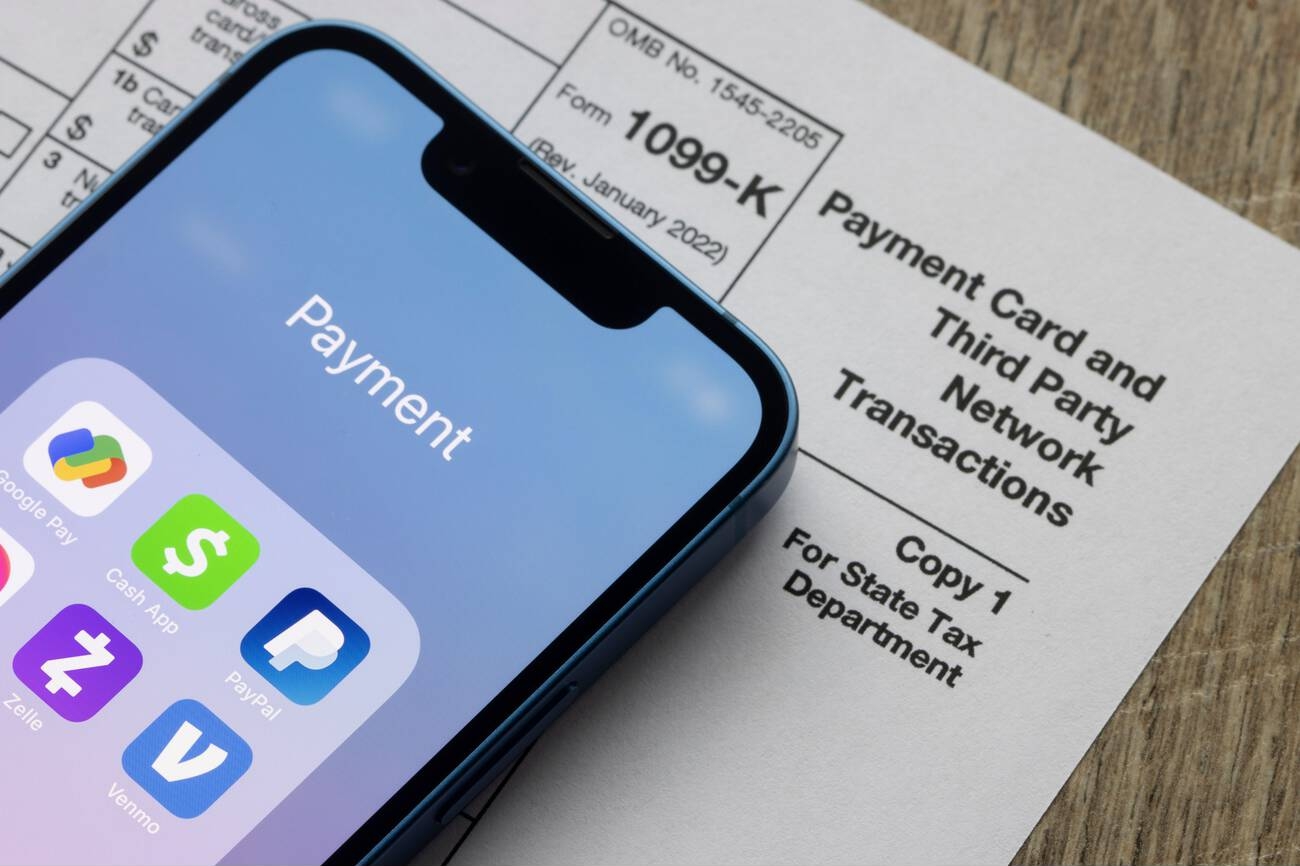Small Business
How Firms are Preparing for New 1099 Reporting Rule Deluge
Major upcoming changes to 1099 filing requirements make it more important than ever for firms to prepare their clients — and themselves — for increased workload and tight deadlines.
Feb. 07, 2024

Each new year can bring resolutions of change and reflections on past experiences, even for businesses. It’s also when millions of taxpayers and tax professionals get ready to start the annual tax reporting season. While that evokes thoughts of April deadlines and 1040 forms for most Americans, there’s a mini-tax season that comes first: The January 31, 2024, deadline for employers to send 1099 forms to contractors (or others defined as non-employees), and also report that information to the IRS and other agencies.
Related: How Did Your 1099 Tax Season Go? New E-Filing Rules Challenged Some in 2024.
For many tax and accounting firms, that information reporting season is getting much busier as more businesses of all sizes are challenged by new 1099 reporting rules.
Key Takeaways:
- In 2024 (for tax year 2023), any organization filing ten or more of any combination of varieties of Form 1099 must file these forms electronically. Failure to do so can result in penalties, but waivers may be given at IRS discretion. In order to submit 1099 forms electronically, filers must request a new IR-TCC code from the IRS, which can take up to 45 days. Extensions may be granted.
- Starting in 2025 (for tax year 2024), the IRS plans to lower the reporting threshold for form 1099-K from $20,000 in payments and more than 200 transactions, to all receiving $5,000 or more, and possibly as low as $600 in the coming years. This will dramatically increase the number of 1099s that many businesses are required to file for payments to sellers on marketplaces such as Amazon, PayPal, Venmo, many gig workers and others.
- Firms need to use the changes to forms 1099-MISC, 1099-NEC, and 1099-K to proactively engage with their clients and keep them compliant in this area.
- Automated systems can help firms manage these processes faster, with little or no data entry, higher accuracy, and lower risk for clients.
For 2024 and the next few years, this will likely be a time of unwelcome surprise for the many small business owners or operators who are unaware that, as of this year, if an entity has more than 10 form 1099s to file, then it must report them to the IRS electronically. And starting in 2025, the IRS is likely to finally implement even lower dollar amount thresholds for when businesses must prepare and submit form 1099-Ks. When the lower thresholds are fully implemented, many professionals say it could result in tens of millions of additional 1099 forms needing to be prepared and reported. To make this “1099-Mageddon” potentially worse, it will come as a surprise for many businesses.
Although the IRS has sent out a few proactive notices to the largest filers, most businesses that are not prepared for the change will likely only receive notices after they fail to comply with the electronic filing requirement. They may also face fines or penalties relating to those errors, according to Lynnae Robinson, CPA, a partner at RubinBrown, which is ranked as the 36th largest accounting and consulting firm in the U.S., with nearly 1,000 total staff.
Robinson leads the Entrepreneurial Services Group team, with about 90 staff providing business advisory services, as well as more tactical services involving business operations, accounting, AR and AP management, and controller services. With ecommerce, compliance, and state and local tax expertise, the firm also can manage all aspects of ensuring 1099 compliance for enterprises in any industry, and works with the firm’s federal tax teams to help ensure clients are compliant and prepared for these issues. Her team has prepared for the new and upcoming changes by turning to the automated 1099 compliance platform from tax compliance automation provider Avalara.
The Challenges of Year-End Information Reporting
While proactive business accounting and tax firms like RubinBrown have been watching these changes closely, and have been preparing their accounting and tax clients to keep them in compliance, many small businesses will be in for a surprise, says Robinson. This is in part because the processes involve distinctly different parts of a business’ operations.
Although collectively referred to as year-end information reporting, W2 reporting functions are often handled by payroll specialists, and contractor payment reporting functions are more likely to be managed by accounts payable. As such, those responsible for managing an entity’s annual tax reporting may not always be prepared to aggregate all of the data from these various departments.
Even Small Businesses Will Feel the Crunch
For many smaller entities, year-end information reporting processes may have been handled in-house in previous years, particularly if only needing to handle a few dozen or fewer such forms. Although manual compliance is tedious and prone to errors, these smaller enterprises may not have realized the value of seeking professional assistance.
“With many of our smaller, family-owned client businesses, some have been more comfortable doing things in a more manual way,” said Robinson. “So, we’ve had to proactively educate them and encourage them to embrace a new system and let them know we can help them assure compliance.”

Robinson also noted that some clients are asking for guidance after having received notices from the IRS or reading of the pending e-filing and threshold changes. “These new rules have certainly been a starting point for conversations that help strengthen our client relationships.”
The e-filing mandate will only be the first shock for these entities, however. Soon, the IRS plans to change the reporting requirements for businesses and individuals who receive business payments via marketplace resellers and payment apps. As of the 2023 tax year, if a business received more than $20,000 from such an app or marketplace (think eBay, Amazon, PayPal, et al, tax law says they should receive a form 1099-K. Per the IRS, the payment amounts that trigger the 1099-K filing requirement is scheduled to drop to $5,000 for tax year 2024, and as low as $600 in the next few years.
The result will be an exponential increase in the number of 1099-Ks needing to be processed and reported by each of these entities, with a corresponding increase in the threat of errors, fines, and audits. The fines can range from $60 to $310 per form for late filing, so businesses need to be prepared and ready to move fast.
Automation is the Key
While RubinBrown is a large firm, serving thousands of clients with reporting obligations that range from dozens to thousands of 1099 forms to be filed annually, Robinson says her team’s approach can be used for firms of any size — thanks to the firm’s client accounting services teams, and its implementation of the Avalara 1099 & W9 system (formerly Track1099), which simplifies compliance for forms 1099, W-9, 1095, W-2, and reporting.
With clients for whom they provide routine accounting or CFO services, Robinson’s team already has the necessary access to sales and payables data, which can be synced into the Avalara 1099 system. For tax and advisory clients, she says, “the Avalara platform has great templates that are user friendly for clients to fill out the information in a specific format, which can also be imported, with review processes in place. And usually their AP system can generate a report that can be read and imported.” This results in very little manual data entry, which speeds and helps ensure accuracy.
Avalara 1099 & W-9 provides a secure and centralized database for firms to connect with client vendors and freelancers to manage their information, with real-time TIN matching. Avalara stores forms 1099 and W-9 and allows import of payee data and vendor detail transfer, while automatically checking for errors. When ready to file, the system automatically e-files the IRS and required states, and delivers 1099 copies to recipients, greatly reducing the risk of IRS penalties. With volume-based pricing, the system is scalable to firms and clients of any size, even those with teams at remote offices around the country.
The Difference
This is the third 1099 filing season for which Robinson’s team have been using the Avalara 1099 system, and she says it has dramatically changed the capabilities of their client service. “As our firm has grown geographically across the U.S., we had been using many different systems and even manual methods (intern work) at some offices, and none were truly web-based,” she noted. “We needed a consistent platform, accessible by teams from across different offices working on the same clients. Avalara was able to give us this single platform that matched our ‘one firm’ concept and made it possible to serve our clients more effectively.” And, she notes, half of her team is no longer stuck printing and stuffing recipient copies in envelopes throughout January.
The Value of an Automation Partner
The changes to this year’s 1099 electronic filing requirements, and the monumental changes that are likely coming in the next couple of years to reporting thresholds make it more important than ever for firms to prepare their clients — and themselves — for increased workload and tight deadlines. Client accounting and tax teams can lessen the pressure with an integrated solution to support their workflows.
What Should a Business Do If They Filed Incorrectly?
If a business filer with more than 10 form 1099s this year is late on their filing or filed incorrectly (on paper) instead of electronically, what should they do?
Robinson advises that businesses in this situation get in contact immediately with their accounting firm, or reach out to Avalara. “It’s best to make an attempt to file properly. While there could be penalties for filing late, the IRS could also assess penalties for filing via the wrong method (eg: paper rather than electronically). If I were in that position, I would exhaust all efforts to file correctly and timely.”
More info:
